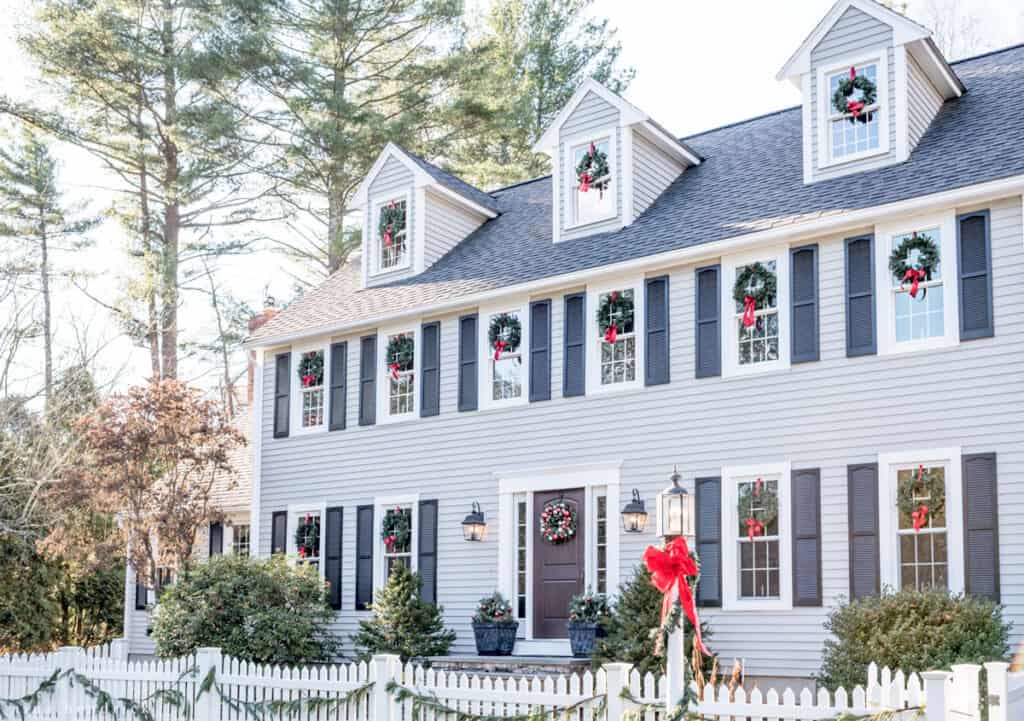The holidays are a special time of year, where traditions blend with creativity to bring festive cheer into our homes. As someone who has decorated a Colonial-style house for Christmas for many years, I can assure you that the beauty of this classic style provides the perfect backdrop for timeless holiday decorations. In this article, we’ll explore various aspects of Colonial House Christmas decorations, from historical significance to practical tips, so you can create a warm and inviting atmosphere for family and friends.
The Essence of Colonial Decor
Colonial decor is characterized by its warm colors, natural materials, and traditional craftsmanship, drawing inspiration from early American settlers. The goal during the Christmas season is to enhance this charm while still embracing modern festive elements.
Historical Significance of Colonial Decorations
Traditionally, Christmas decorations were simple and utilized items readily available to settlers. This included natural elements such as pine boughs, fruit, and berries, reflecting a connection to nature and sustainability. Today, we honor this history by integrating traditional elements with contemporary designs.
Common Characteristics of Colonial Christmas Decor
- Natural Materials: Wood, pine, and other organic materials are often used.
- Warm Color Palettes: Rich reds, greens, golds, and browns dominate.
- Handcrafted Items: Emphasizing the value of craftsmanship, handmade ornaments and decorations are preferred.
- Classic Motifs: Think of stars, angels, and traditional holiday symbols.
Getting Started with Colonial Christmas Decorations
Transforming your home into a Colonial Christmas wonderland requires planning and a few essential elements. Here’s a step-by-step guide to help you get started.
1. Choose a Color Palette
A well-defined color palette is crucial. Stick to traditional colors like:
- Deep reds
- Forest greens
- Golds and bronzes
2. Incorporate Natural Elements
Use items like pine cones, berries, and dried leaves. These can be arranged in decorative bowls or used to create garlands.

3. Select Appropriate Lighting
Lighting plays a critical role in setting the mood. Consider using:
- Candles – They can create an inviting, warm glow.
- String lights – Opt for warm white for a classic feel.
4. Traditional Ornaments and Decor
Look for hand-crafted ornaments, perhaps in the shape of colonial motifs like stars or angels. Consider displaying them on a traditional Christmas tree or in decorative wall arrangements.

Decorating Different Areas of Your Colonial Home
Each room in your Colonial house offers unique opportunities for decoration. Here are some ideas on how to effectively decorate various spaces:
The Living Room
The heart of a Colonial home is often its living room. Consider the following:
- Fireplace Decor: Drape garlands over the mantel with candles and pine boughs.
- Wall Hangings: Use wreaths made of natural materials.

The Dining Room
Make your dining area inviting for festive gatherings:
- Centerpieces: Create natural centerpieces using fruits and candles.
- Table Settings: Use rustic tableware and linen for an authentic look.
Entryway
Welcome guests with a warm first impression:
- Door Wreaths: Handmade wreaths are ideal.
- Decorative Lanterns: Place them on either side of your front door.

Tips for Creating a Cohesive Look
To achieve a harmonious display throughout your home, here are some tips:
1. Balance and Symmetry
Use symmetry to create balance in your arrangements, particularly in larger spaces.
2. Layering Textures
Combine various materials, such as burlap with velvet or wood with metal accents, to add depth.

3. Personal Touches
Incorporate family heirlooms or handmade items to make the decor feel personal and special.
Pros and Cons of Colonial House Christmas Decorations
Pros
- Timeless appeal that suits various tastes.
- Encourages the use of sustainable, natural materials.
- Creates a warm and inviting atmosphere.
Cons
- Can require more effort to source authentic materials.
- May need more planning to achieve a cohesive look.
- Some elements may be heavier on the pockets than fast-fashion alternatives.

Comparison of Colonial-Inspired Christmas Decorations
| Decoration Type | Material | Cost | Longevity |
|---|---|---|---|
| Handmade Wreath | Natural greenery, berries | Medium | 1-2 seasons |
| Rustic Ornaments | Wood, metal | High | Many years |
| Candles | Wax, natural scents | Low | Until burned out |
Incorporating Modern Elements into Colonial Decor
While it’s great to honor tradition, don’t shy away from using modern elements. For example:
- Incorporate LED candles for safety.
- Use contemporary decor items that complement your traditional pieces.

Frequently Asked Questions (FAQs)
What materials are best for Colonial Christmas decorations?
Natural materials like wood, pine, fruits, and fabric are ideal for creating authentic Colonial decor.
How can I make my Christmas tree reflect Colonial style?
Use handmade ornaments in traditional colors, alongside natural elements like dried fruits and popcorn garlands.
Are there any DIY projects for Colonial decorations?
Absolutely! DIY wreaths, garlands, and ornaments can all be made using simple materials found at home or local craft stores.
Can I mix modern decorations with Colonial style?
Yes! Blending modern elements with Colonial decor can create a unique and inviting atmosphere, so feel free to experiment.
Where can I find authentic Colonial decor items?
Look for local artisanal shops, historical sites, or online platforms specializing in handmade and vintage items.
Conclusion: Creating Your Own Colonial Christmas Wonderland
Embracing the warm, inviting spirit of Colonial house Christmas decorations allows us to create a festive atmosphere that honors tradition while inviting modern comforts. By utilizing natural materials, rich colors, and personal touches, you can transform your home into a Colonial Christmas wonderland where family and friends can gather and create lasting memories. Happy decorating!